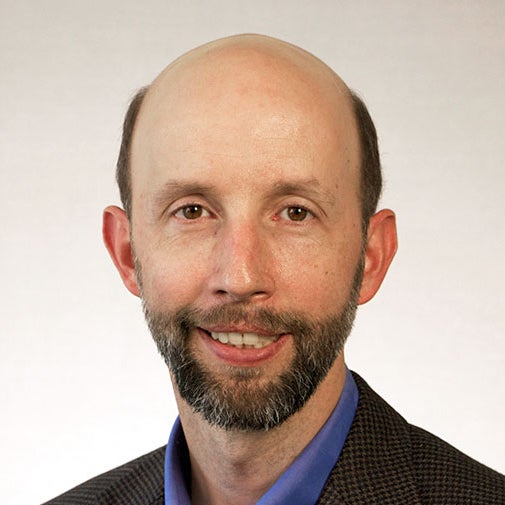
-
CBIS 2111
-
swankd@rpi.edu
-
(518) 276-4174
About
Douglas Swank holds a PhD in physiology in 1995 from the University of Pennsylvania where he investigated the roles of different muscle fiber types in powering locomotion with his mentor Dr. Larry Rome. From 1996 to 2000 he gained expertise in Drosophila genetics through a postdoctoral position at San Diego State University in Dr. Sandy Bernstein’s lab. From 2000 to 2003 his postdoctoral work at the University of Vermont focused on insect flight muscle mechanics under the supervision of Dr. David Maughan. In 2005 he started his career at the Center for Biotechnology & Interdisciplinary Studies at Rensselaer Polytechnic Institute in Troy, New York. He has been at RPI 17 years, working his way up from Assistant to full Professor of Biological Sciences and joining the Department of Biomedical Engineering. The expertise of his multidisciplinary lab is investigating muscle’s ability to power a wide variety of locomotory tasks and understanding contractile protein mutations that cause muscle and heart diseases. His lab is a world leader in performing Drosophilia muscle mechanics. A current focus of the lab is understanding the roles and mechanisms of muscle stretch activation in insects and mammalian skeletal muscle.
Ph.D. University of Pennsylvania, 1995 - Physiology
B.A. University of Rochester, 1990 - Biology
Postdoctoral Research & Training
Postdoctoral Fellow, San Diego State University, 1996-2000 - Biology
Postdoctoral Fellow, University of Vermont, 2000-2003 - Molecular Physiology & Biophysics
Research
Dr. Swank has been a member of the RPI faculty since 2005. He heads a dynamic, multidisciplinary laboratory of students, staff, and post-docs. His laboratory investigates how muscle is able to power an amazingly wide variety of locomotory tasks and modulate heart function. Research focuses in the lab include determining how variation between muscle fiber types (e.g. slow versus fast-contracting fibers) is generated, the mechanisms behind muscle mechanical properties such as stretch activation, and muscle diseases such as hypertrophic cardiomyopathy. An integrative approach is taken, starting with muscle genes and moving up in scale to protein expression and function, muscle mechanics, and whole organism studies. His research team primarily uses Drosophila for their studies, due to Drosophila's ease of genetic manipulation and mechanically testable muscles. However, we have recently started using mammalian muscle types to gain further insights.
Dr Swank's lab has primarily focused on the role of myosin, the molecular motor that powers muscle contraction, in modulating muscle mechanical properties. Drosophila is currently the only system that can be transgenically manipulated to express a specific myosin isoform or mutant myosin in a specific muscle type. The expressed myosin can be isolated from Drosophila to measure single and ensemble biochemical and biophysical molecular properties such as ATPase rate and actin sliding velocity. Laboratory members also measure mechanical properties (e.g. power, velocity and force) of isolated muscle fibers expressing transgenic myosin and relate altered fiber properties to changes in locomotion, such as flight ability. Besides myosin, the laboratory also investigates the function of other muscle proteins such as muscle LIM protein (MLP), actin and troponin C.
The lab investigates mechanisms behind several muscle and heart diseases such as familial hypertrophic cardiomyopathy (HCM) and distal arthrogryposis. HCM is an inherited genetic disease that is the leading cause of sudden cardiac arrest among young adults. The lab creates transgenic Drosophila models of these diseases and perform experiments to determine how these disease states alter the mechanical function of muscle and to provide insights into possible treatments.
Heart Disease, Muscle Disease, Cardiac Physiology, Muscle Physiology, Muscle aging, Muscle fiber development, Locomotion, Drosophila Genetics
For more information about Dr. Swank's research and team members, visit the Swank laboratory website.
Teaching
By appointment
BIOL 4270 - Human Physiology
Fundamental physiological processes and their mechanism of action in human and higher mammalian organisms. Emphasis on the control and interaction of physiological systems. Introduction to the muscle, nervous, circulatory, renal, respiratory, digestive, reproductive, and hormonal systems. Limited to biology, biochemistry and biophysics, bioinformatics and molecular biology majors, and biology accelerated medical students.
BIOL 4470/6470 - Muscle and Cardiac Biology
This is an in-depth study of current papers within the broad field of Muscle & Cardiac Biology. Students will read and critique primary papers, present current research articles, and lead critical discussions of topics listed in the class schedule.
BIOL 4250 - Developmental Biology
Model systems provide the experimental basis for understanding the conserved principles of developmental biology. This class will cover fundamental topics including axis specification, pattern formation, cell fate and determination, cell differentiation, senescence, and apoptosis. Emphasis will be placed on integrating gene function and cell behavior with development. Model systems include vertebrates (e.g. frog and chick) and genetically tractable invertebrates (e.g. fruit flies and roundworms).
BIOL 4110 - Investigative Medicine I
Students will be exposed to real time investigative biomedical research projects that are currently in development, taught the principles of research project development and exposed to clinical experiences at a level typically found in college graduates/post graduates who are entering medical school.
BIOL 4120 - Investigative Medicine II
Students will be exposed to several clinical experiences at a level typically found in college graduates/post graduates who are entering medical school.
BIOL 4130 - Biomedical Research
Independent research in health sciences, supervised by a faculty member, for the purpose of developing research skills. Such skills include defining a research project, both as a written and oral exercise for a scientific and general audience, and gathering preliminary research data enabling both a written and oral description of the project in the form of a research proposal and an oral defense. This is a communication-intensive course.
Publications
The following is a selection of recent publications in Scopus. Doug Swank has 61 indexed publications in the subjects of Biochemistry, Genetics and Molecular Biology, Biochemistry, Genetics and Molecular Biology, Biochemistry, Genetics and Molecular Biology.